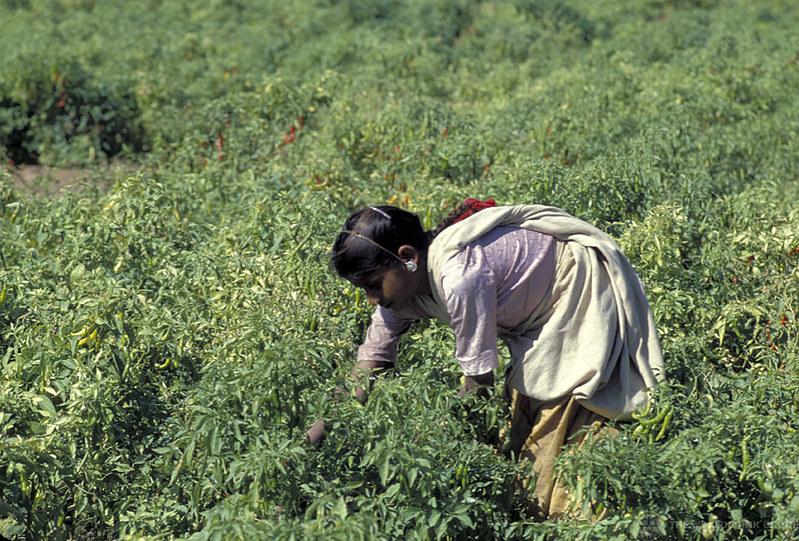Using AgTechs to Improve the Agriculture Sector in India

Agriculture Technologies (AgTechs) have demonstrated positive impact on improving the development of agriculture sector specially during the COVID-19 pandemic. By disrupting traditional supply chain, agtechs help to improve efficiency, reduce input cost, and increase farmers’ income by raising farm gate price, etc. Adopting and scaling up AgTechs can unleash the potential of the improvement in agriculture sector, which is of great significance to countries with high proportion of employment in this industry .
India has 41.49% of its workforce employed in agriculture industry (ILO 2020). Protecting farmers are especially imperative in the context of the COVID-19 pandemic. There is significant potential of commercial opportunities for Agtechs to disrupt the existing model and create win-win solutions for farmers and consumers. Research has estimated that “the potential economic impact of technology applications in agriculture to the tune of “$45 billion to $80 billion annually in 2025, benefiting up to 90 million farmers” (McKinsey 2014).
With this in mind, GIIF will be working in the country on the recently approved ‘India AgTech Advisory ‘ project, to contribute to the creation of a better business environment, the improvement of the business and regulatory environment that enhance AgTech competitiveness by the end of the 4-year project period. The team lead, Vijayasekar Kalavakonda, shares with GIIF his insights into the project and how it brings advancement to agriculture sector in India.
GIIF: Vijayasekar, could you please let us know the key challenges impeding the AgTech ecosystem in India?
Vijayasekar Kalavakonda: First of all, COVID-19 presents unprecedented challenges for AgTechs in India. Supply chain disruptions for inputs, transport constraints, labor shortage and limited market access, and almost no buyers. These combine to hurt the farmers deeply.
However, the pandemic also presents opportunities for AgTechs focused on e-commerce and remote farm advisory services amongst others. AgTechs are yet to be included in the government’s COVID response programs. Additionally, public procurement policies inadvertently crowd-out AgTechs due to rules such as net worth, years-of-experience, turnover, etc.
Apart from the pandemic, there are still long-standing challenges in this country:1) Standard rules, acts do not recognize AgTechs formally; 2) Overlapping regulations and different rules by states for the same Act/law imposes heavy burden and increases the cost of doing business; 3) Access to data is a serious constraint on generating innovative products and solutions by AgTechs; 4) Admin norms, especially at district-level, often override formal rules, licenses and restrict private sector’s access to farm gate directly. Several policy measures enacted during COVID are yet to be implemented at state and district level and need clear decentralized guidelines.
GIIF: what are the highlighted components of this project and how the components can effectively address the challenges to AgTechs in India?
Vijayasekar Kalavakonda: In this project we start with Component 1--creating AgTech policy consensus at state level. This incorporates activities such as creating a Steering Committee at the State-level with multiple stakeholders, as well as developing an overarching state-level AgTech development road map. With these initial steps, we aim to create a dedicated coordination mechanism for anchoring the policy implementation for AgTechs, address interdepartmental coordination issues and pave way for sensitizing agencies towards AgTechs.
As next steps, we focus on facilitating regulatory reform for AgTechs. This component primarily aims to create the framework for AgTechs and tier 1/2 Agribusinesses deploying technology to grow and reach scale. This will be achieved by addressing state-level policy gaps and cumbersome procedures identified by IFC, based on extensive consultations with AgTechs.
Specifically, we will work together with the concerned public authority on 1) Simplifying Procedures to Enable Operations of Agtechs and tier 1/2 Agribusinesses deploying technology solutions. 2) Enabling Scale of AgTech solutions and services by Harmonizing Procedures both within (Intra-state), and across states (Inter-state), 3) Enabling Access to Data for AgTechs.
Once the reforms have been approved and passed, the final step is to ensure they are implemented swiftly and efficiently. This requires capacity building of public authorities. Experience shows public authorities need support to implement the new regulations. Thus, we will provide training to ensure a smooth Government to Business G2B interface based on the nature of services being offered and at various administrative levels such as state and districts to AgTechs. The concerned state authorities also need to promote the creation of AgTechs and foster the deployment of technology by agribusinesses. As a result, our capacity building activities will focus on aspects pertaining to AgTech promotion, policies or reforms to foster compliance, service delivery, providing outreach and aftercare facilities to AgTechs. Lastly, we will build capacities of select state agencies towards building a Digital Agri-Stack by undertaking a data architecture exercise to identify and integrate multiple datasets relevant for farm sector and data sharing. Create awareness within Government agencies regarding the use cases that could emerge from applying analytical models to the data that resides with them.
We believe the project will contribute to an increase in the turnover of existing AgTechs, and an increase in number of AgTechs in the participating states. Additionally, the policy enablers would support indirectly in generating potential investment in AgTech startups.
GIIF: We thank Mr. Vijayasekar Kalavakonda for his valuable insights.
Photo Credit: World Bank / Curt Carnemark
